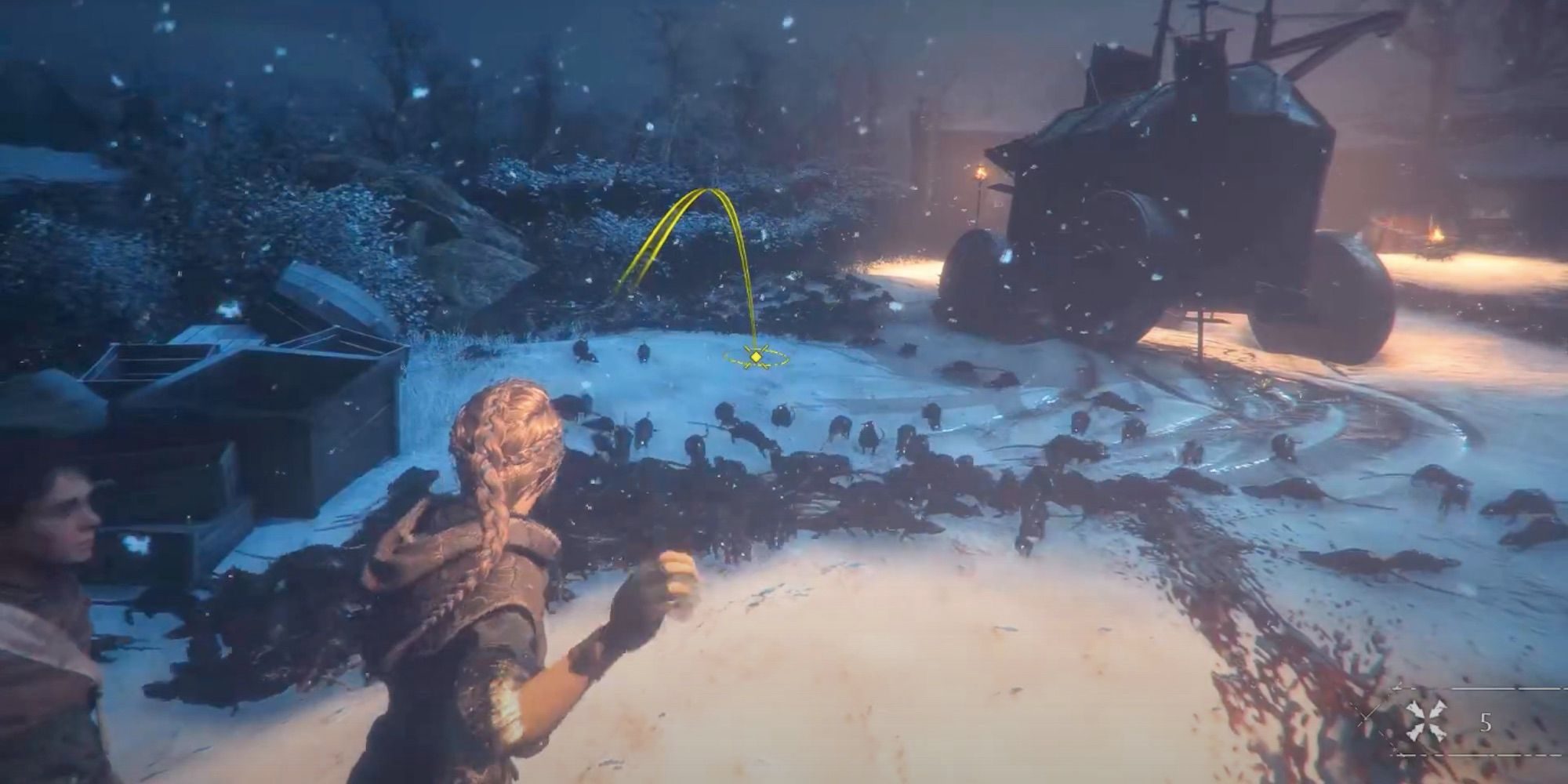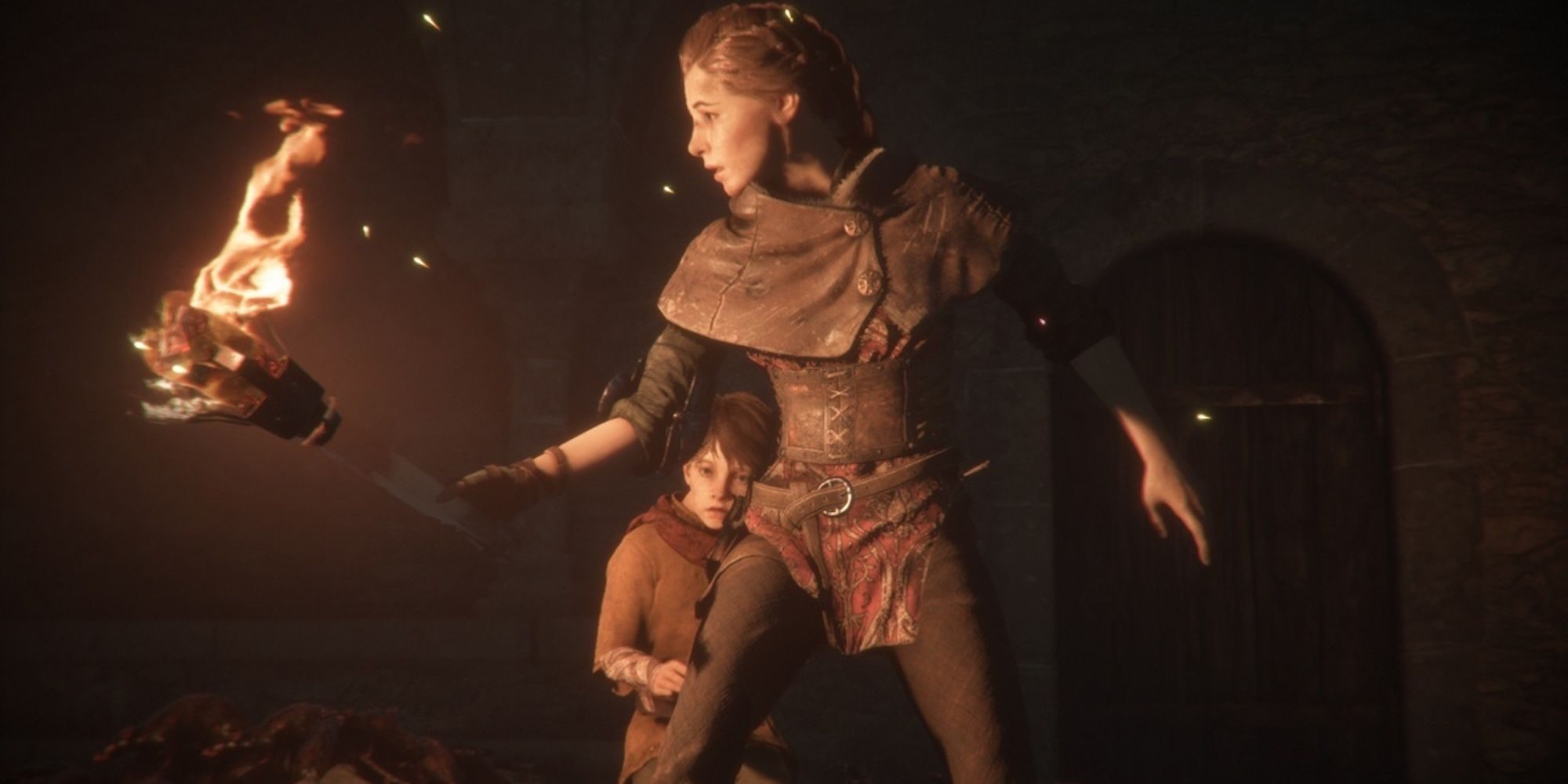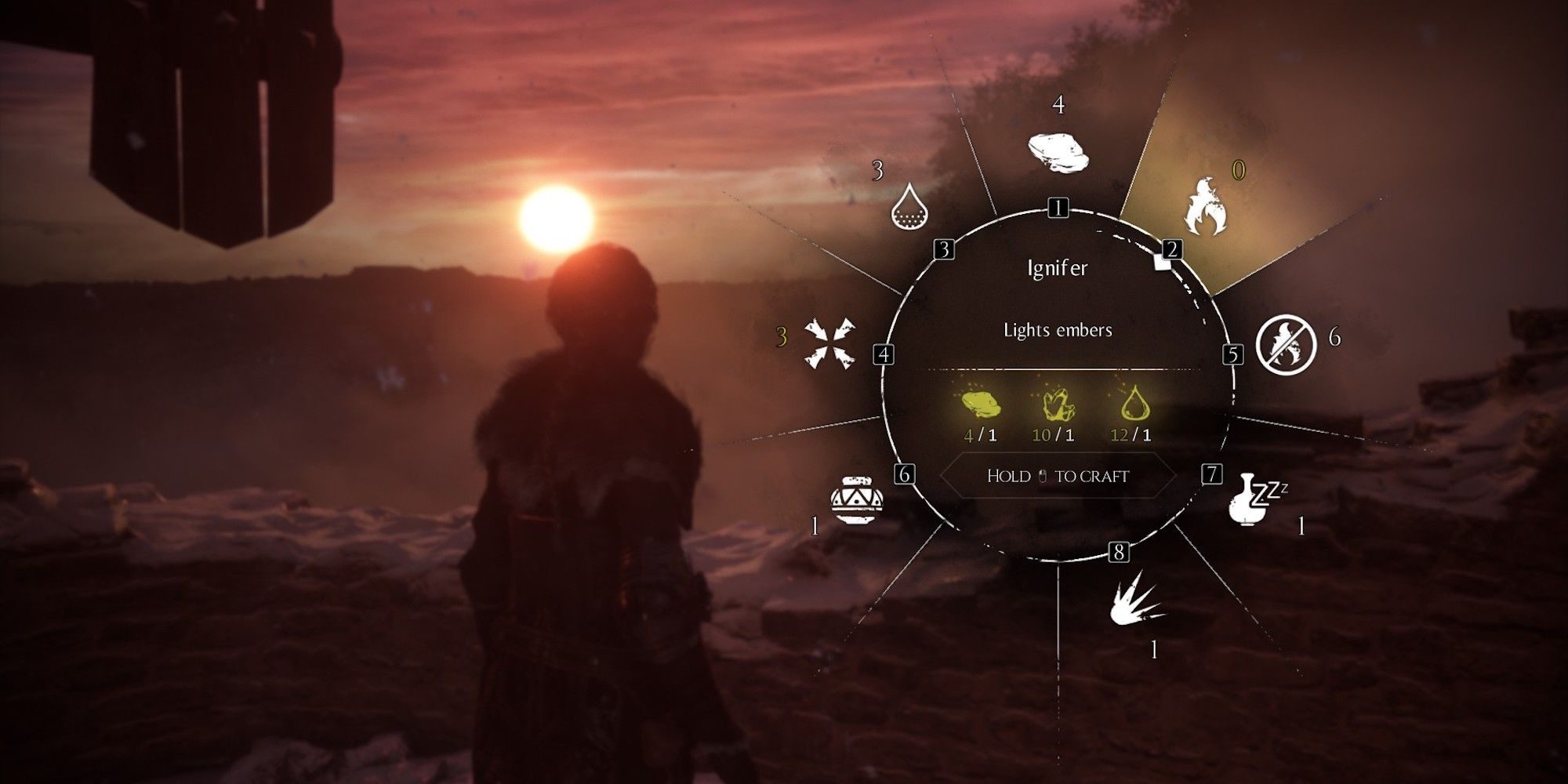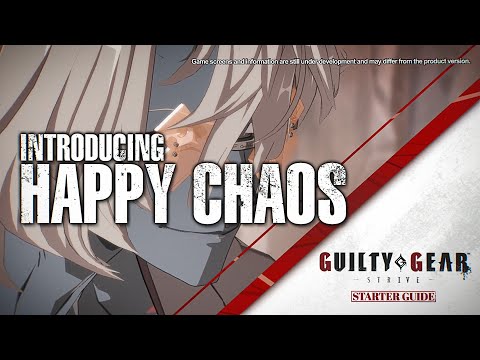A Plague Tale: Innocence is a wonderful game about stealth, puzzle solving, and using combat as a last resort – at least for its first two acts. You play as Amicia, a 14th-century French knight’s daughter who becomes orphaned due to a rat plague and the arrival of the Inquisition – zealots led by a self-proclaimed saint. Amicia has to escape her conquered home with her sick younger brother, Hugo, in tow. She has to learn how to survive outside the lap of luxury while also becoming a sister to the brother who was kept locked away from her due to his illness.
The story pulled me in quickly and only got more intriguing as I played through the first few chapters. Other misplaced kids and teenagers join Hugo and Amicia as they try to survive and defeat the Inquisition. It’s an inspiring tale of young rebellion that is at its best when it’s leaning into the characters’ strengths and weaknesses – they’re clever, agile, sneaky, and passionate. What they are not is great in a head-to-head physical fight.
RELATED: Hiro's Escape Interview: Stealth With An Impressive Game Boy Aesthetic
A Plague Tale discourages combat by making it so that Amicia and your friends all die in just one hit or as soon as an enemy gets too close. The only weapon you have that can directly hurt Inquisition soldiers is a sling that fires rocks – neato. You get various new types of ammunition – rocks slathered in alchemical components, for example – that can cause helmets to melt off, making melons vulnerable to getting smashed in with a rock flung at terminal velocity, but this process is slow and cumbersome. It’s much better to simply distract enemies and sneak by them. The game leans into this approach, gently nudging you towards the non-violent options as often as possible. You only have to kill enemies when a new type of chemical-covered rock is being introduced to you, and then you can leave it behind.

Given the first ten or more hours of the campaign involved me crawling through the muck like a rat in a sewer, you can imagine my surprise when the last few hours of the game turn into a clunky third-person shooter. It starts off interestingly enough, with Amicia having to break up large swarms of rats by flinging a little fire bomb into the fur tornado. The rats are fast and Amicia’s sling is slow, so this combination puts a lot of pressure on you. It works, though, because it comes at a natural high point in the game’s momentum – you’re learning more about the history of the plague and how your brother’s illness connects with it. This works as a one-off level used to heighten the sense of urgency, but it quickly becomes bland.
After a painfully slow sequence where you’re forced to play as Hugo, who has absolutely no weapons and must sneak around a stage where getting spotted is an instant fail. The rest of the game mostly does away with stealth and instead pushes you towards killing enemies with a combination of stones and rats. While the narrative development of seeing Amicia and Hugo go from children scared by death and their ability to commit murder to vicious killers is interesting, it loses its value when they swing so wildly towards the serial killer end of the spectrum.

I wouldn’t mind these levels if Amicia got a new weapon, or the combat controls were made more responsive, but loading, aiming, and firing her sling is still as unwieldy as when the game was encouraging you to sneak around – even after upgrading it. This wasn’t an issue when I only killed enemies I’d distracted with a broken pot, or when I was scrambling for survival after accidentally alerting a guard. However, in one section the game sends six enemies after you, one by one, and you have no choice but to split their noggins open. This stops the game feeling tense and gives it an on-rails shooter feel – only the shooting sensitivity is stuck at 25 percent.
I spent a good half an hour repeating the same scripted segment over and over, all because the sling just couldn’t seem to lock onto an enemy’s head as he was charging down a set of stairs and my shots kept missing, like I was skipping stones instead of trying to embed them into fanatics. This wasn’t tense, it was annoying.

Another section in the third act featured using Hugo's newfound rat control powers to devour hordes of unsuspecting patrols. To do this, you have to use Amicia’s sling to extinguish fires, open the weapon wheel, switch to Hugo’s rat power, aim, switch to Amicia’s sling again to chuck rocks at lanterns to put out their light, and go back to Hugo’s power, over and over again until everyone is dead.
A Plague Tale's third and final act is a far cry from the stealth and survival gameplay that kept me on the edge of my seat throughout the first two. It’s a strange pivot towards the game’s weaker mechanics that had me completely out of my seat – mainly because I was getting up to turn my Xbox off.
Next: Hellblade: Senua's Sacrifice Is A Story Only A Game Can Tell




